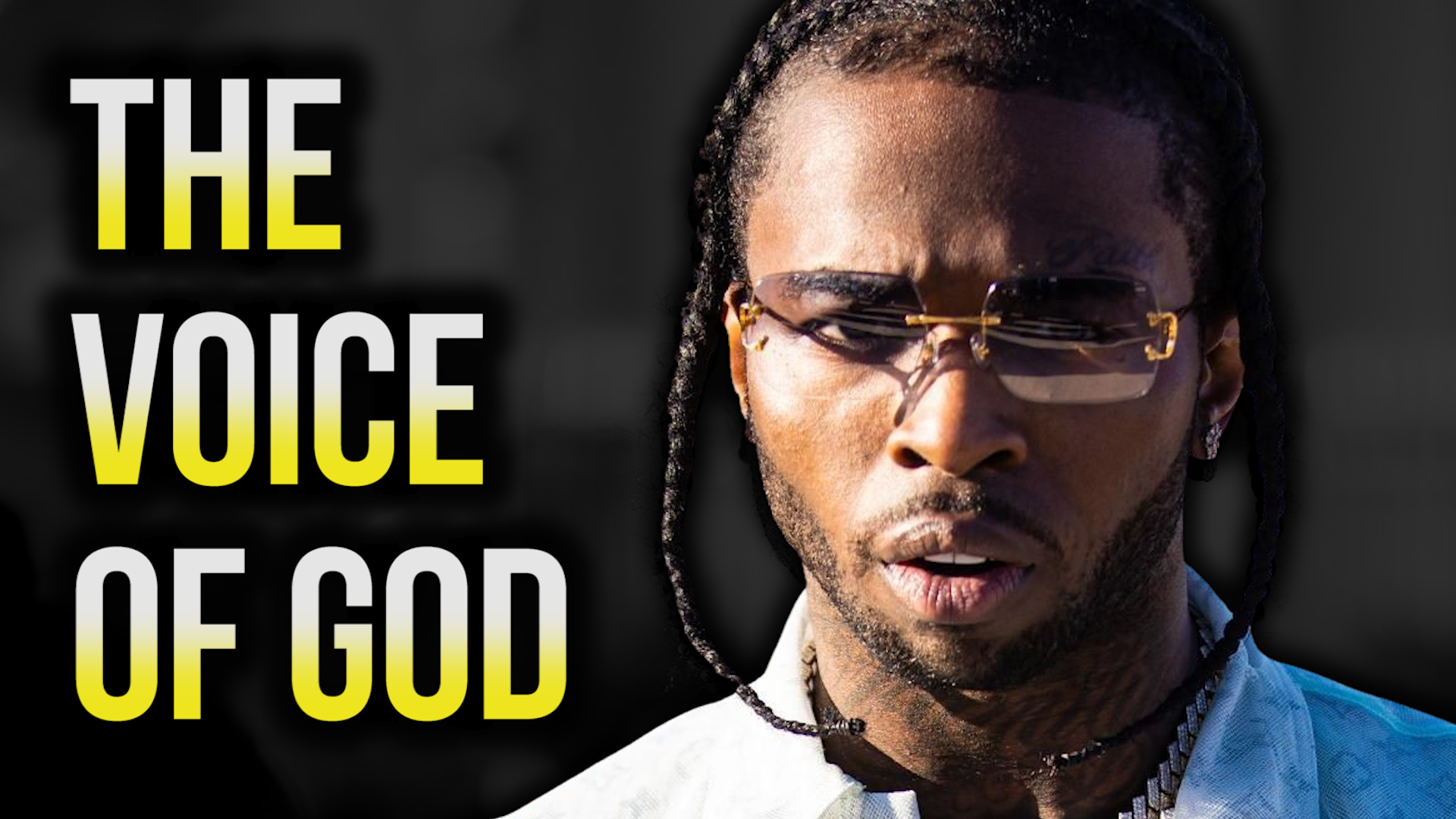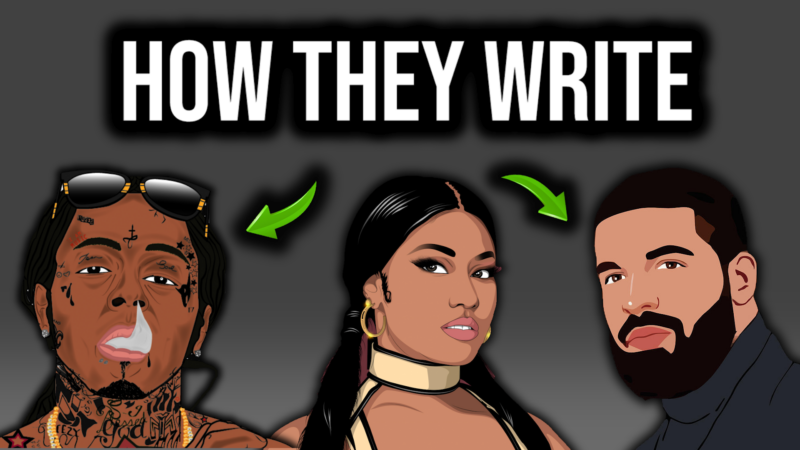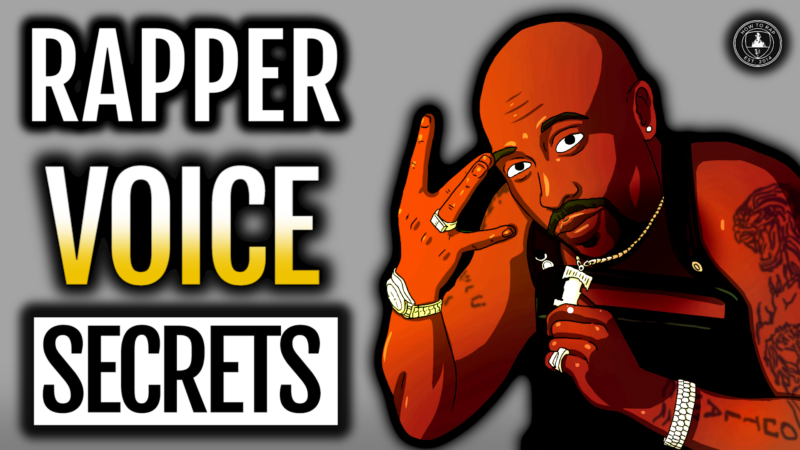10 Rap Voice Secrets Nobody Tells You

Rap voice. Vocal delivery. Raspiness. Tone.
All of these words describe that mysterious alchemy of skills required for a rapper to dominate the music with charismatic inflection the second you hear them on the track.
In today’s article, we’re going to tell you 10 secrets about rap voice that nobody is talking about.
Sure, you’ve seen articles that list the best rapper voices, that tell you how rappers should layer their vocals like Pop Smoke, or simply press a “special sauce” button on ProTools and every voice issue will be fixed…
…But few videos have provided an easy-to-follow list, based on a near decade of rap coaching analysis and working with artists from around the world…
…The 10 secrets to rap voice that will resurrect a bad rap voice or explain to someone with a fantastic delivery exactly what they’re doing right.
With that being said, let’s go in countdown order when discussing these rap voice secrets and begin right here, right now.
#10 You Shouldn’t Just Have “One” Rap Voice
Now, you have to realize that in 2022 and beyond, the best rappers in the world don’t just have “one” rap voice that they stick to.
Whether it is the recent multi-voice symphony of bars delivered by Kendrick Lamar on 2021’s “Family Ties” where he says “New flows coming be patient, brother”…
…When he really could have also said, “new voices coming, be patient, brother”…
…Or that moment where you realized that every single voice – from the on Drake’s “No Friends In The Industry” was still Drizzy himself – from the trap like first verse all the way to drill sounding third verse.
From the woman’s point-of-view voice on the third verse of J. Cole’s “Lights Please” to Eminem’s many vocal characters on songs such as Ken Kaniff, sticking to one voice isn’t just “not the wave”… if you’re sticking to one voice you’re behind the ball.
#9 Technology Has Opened Up More Lanes For Rap Voice
Part of the reason for this is our #9 rap voice secret:
Recording technology has expanded the possibility for rap voice beyond what 80’s and 90’s rappers even thought possible.
Back in the 1980’s and 1990’s, Hip-Hop delivery and rapping in general had not progressed to a point where there was even technology available to manipulate the vocal palette to a considerable degree.
Rappers honed their vocal skills on the block, in the cypher, and at best in an analog studio where they had to project more to get a good sound.
This is why rappers like 2Pac, DMX, or even Run DMC were so straight up LOUD when they rapped. They learned how to project their rap voice on the streets of Oakland, Yonkers, and Queens, respectively.
In 2022 up-and-coming rappers don’t have to do that. They have amazing technology at their disposal they can and should be using to expand the possibilities on how to find their rap voice.
#8 New Rappers “Under-Rap”, Old Rappers “Over-Rap”
By now understanding how and why rappers use their rap voice in different ways due to technology, we can explain why newer rappers sound so “relaxed” on the track and older rappers think they need to overpower the track to make a point.
This explains why new generation rappers like Lil’ Baby don’t project their voice very much on the music and yet they can still sound in sync with the music. They let the technology do the work for them.
However, this is not to say that beginning rappers should not master how to project their voice properly. We’ve found that many artists who have been writing for let’s say two years often are not projecting their voice ENOUGH or using their vocal emphasis improperly.
One quick pro-tip to utilize vocal emphasis properly is to go into the notes where you wrote your bars and put the words you want to emphasis in BOLD, italics, or underline in order to remind yourself you want to say them in a different way.
We go more in-depth on how to restructure your bars in a way that guarantees you’ll know what words to emphasize in our Rap Voice Mastery free bonus course, which you can find out more information about by clicking HERE.
In any case, the important thing to understand is in order to get a 21st century sound like Lil’ Baby, Roddy Ricch, or Drake, you want to actually “under-rap” a bit and let the technology do its work…
…Or if you want an older-school, Golden Era sound… learn how to project and emphasize more, the way that actual Golden Era rappers like DMX and 2Pac did, or Golden Era SOUNDING rappers like Griselda do.
#7 Engineering Is 75% of The Battle In The 21st Century
Although his career is seriously and understandably on life support due to the Astroworld tragedy, Travis Scott demonstrated to a new generation of rappers that if you can win “the battle for good engineering” you can win the battle for a good rap voice.
Particularly in the case of Travis and thus many modern trap-pop rappers, the extensive use of these two elements (along with auto-tune) have made their voice other-worldly:
- Delay
- Reverb
The prominence of the recording engineer has increased ten fold since the days of battling in the cypher like we mentioned in the last secret.
Finding a good engineer and/or learning the ins and outs of proper mixing is more than 75% in expanding vocal options in rap.
#6 “One-Take” Verses Aren’t Really A Thing Anymore
Part of the advantage having an individual engineer taking the helm on a lot of the musical weightlifting these days is that you no longer have to rap an entire verse in one good “take” in order to get it to sound right.
In fact, in 2022 and beyond, doing one-takes can often do more harm than good.
For a refresher – a “take” is one short performance of several lines of rap that will be cut together with other performances and eventually put together to sound like the rapper did it all at the same time.
The easiest analogy is like the movies, where they perform several rehearsals of a scene and then take the best moments from them to make it all look like one conversation.
In any case, with a few notable exceptions, rappers in the 21st century utilize engineers and the ability to “cut up” their verses into takes in order to get the best rap voice “takes”.
This both helps with the freedom to try new voices AND avoid running out of breath or sounding winded.
#5 “Write With The Breath In Mind”
Now that we’ve just explained how rappers avoid running out of breath on a track by using things like “takes” to get the best vocal sound, it’s important to note that experienced artists are also VERY AWARE that they will run out of breath a certain moments.
With this in mind, they are writing their bars knowing that they will run out of breath at certain points, and thus adjusting their flow to compensate for this.
This might be by making a very organized, static bar-for-bar flow the way 2Pac did or this might be by stringing together a lot of short takes in one fluid style of cadence the way Gunna, Lil’ Baby, and many trap rappers do.
The message for #4 is that paying particular attention to how both famous rappers and up-and-coming rappers utilize their breath is one of the key secrets to the development of rap voice.
#4 The Best Rappers Adjust Individual Words
In addition to understanding how breath control works in rap voice and how engineering has a close-knit relationship to it, there are not enough new rappers who understanding how the changing of just ONE individual word can make all the different in a hot bar and something that’s considered “mid”.
Lil’ Wayne was one of the main influences on modern rap voice in this regard. If you listen back to his now-revolutionary mixtapes such as The Dedication series, he would adjust the inflection of words like “money” to “mun-eh” or stretch out words at the end of the bar like “Can’t fall asleep ‘cause the money keep caaaaallling” to add an entertaining aspect to his bars.
This isn’t limited to the 21st century, however: close analysis of rappers such as 2Pac with his iconic “Hennnnesssssy / Enemiiiiiess” scheme is another solid example of how just changing ONE word’s enunciation with rap voice can make all of the difference.
The freedom and fluidity with which you as a rapper can adjust individual words within your bars will really take you from being an average or intermediate rap artist to a legend like a 2Pac or a Lil’ Wayne.
One really good way to experiment with different words and pronunciations is by doing it while you freestyle.
The advantage with practicing voice while freestyling is that you’re not nervous that you’ll run the risk of picking the wrong voice since you’re not planning on releasing whatever you’re rapping off-the-top (usually you’re not releasing those)…
…And because you will be focused on other things like what to rhyme, staying on subject, and riding the beat… you’ll be more loose and creative with your rap voice choices.
A good place to start to get better at freestyling is clicking HERE to check out our freestyle course which will teach you How To Master The Art of Freestyle Rap In 2 Weeks or less, guaranteed.
#3 Ad-Libs Can Add More Than Over-Rapping
Individual word adjustments don’t have to be limited to just the main bars you are rapping on the verse, though.
Also understand that much like the technological advances of engineers and recording technology has adjusted the way rappers write their actual verses and choruses…
…It’s also adjusted what they do in the BACKGROUND of a song, a.k.a. the ad-libs.
An ad-lib is an additional sound, voice, or full statement made on a rap song that isn’t intended to be perceived as part of the main vocal.
The most well-known examples as the signature Rick Ross grunt “unngh” – that’s an ad-lib…
The Travis Scott “it’s lit!”… that’s an ad-lib…
Or even more complex statements such as the “yeah yeah yeah!” Kid voice in the background of “My Name Is” by Eminem when he asks, “Do you like violence?”
And so, the rap voice secret here to remember is you sometimes do more good for your track by perfecting your use of ad-libs than you do by changing every single word and or trying to find a new voice all the time.
In fact, sometimes it’s best to spend an extra 30 minutes before mixing your track down on working on ad-libs.
Our collaborations with Purps of 808 Mafia who worked on Juice Wrld’s Death Race For Love surprised us when Purps told us to do as many 5 ad-lib takes before we mixed so that he could choose the best ad-libs for the song itself.
#2 Rap Voice Changes Over Time
This is probably a good time to remind people that rap voices, much like any other muscle, develop and morph over time.
Sometimes that is a conscious decision and process of evolution for the rapper the way that Drake went from sound like a Diet Lil’ Wayne on Thank Me Later to his modern sound…
…And sometimes that is due to them simply getting older or having something happen to them such as Beanie Sigel.
However, the main takeaway here with #7 is that whether you’re a new young rapper that feels their voice isn’t strong enough, or you’re a fan wondering why your favorite rapper just overall “sounds different”…
…Understand that the human body goes through changes over time in addition to the fact that rappers are always experimenting with new voices in order to expand their possibilities.
This is again why rappers like Eminem, Kendrick, and even Tyler The Creator keep the audience interested in their work, because almost every album their have new vocal tones to bring to the table.
#1 Rap Voice Can Be Improved
With that in mind, we’ll take a quick second to remind everybody that rap voice not only changes, but that it can be improved with proper focus and practice.
Anybody who believes that a rap voice has stay one way for ever isn’t really an expert on music.
Much like singing where proper training on placement, breath control, and vocal fold manipulation will help somebody “learn how to sing”…
…The same things we can be done with rap voice. We hope this article has been a helping starter kit for seeing that it’s possible, and for more information pick up our rap voice mastery course HERE and our freestyle course HERE.


